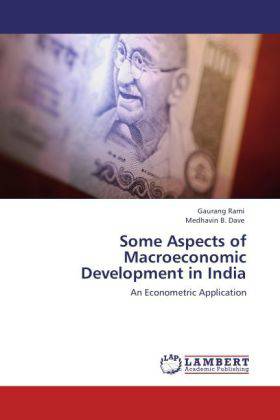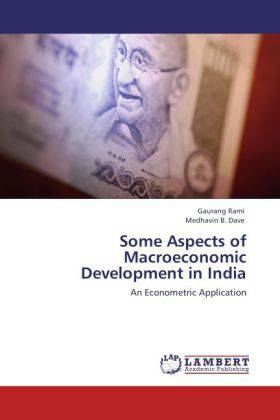
- Afhalen na 1 uur in een winkel met voorraad
- Gratis thuislevering in België vanaf € 30
- Ruim aanbod met 7 miljoen producten
- Afhalen na 1 uur in een winkel met voorraad
- Gratis thuislevering in België vanaf € 30
- Ruim aanbod met 7 miljoen producten
Zoeken
Some Aspects of Macroeconomic Development in India
An Econometric Application
Gaurang Rami, Medhavin B. Dave
Paperback | Engels
€ 58,45
+ 116 punten
Omschrijving
Money occupies an important place in the evolution of Economics as a science. The world of economic transactions has expanded & Monetary Economics has developed as a separate branch of Economics. This book is a part of Ph.D work of Dr. Gaurang Rami. Dr. Rami has obtained his Ph.D. degree under the guidance of Prof. M.B.Dave from Veer Narmad South Gujarat University, Surat, India in December 2007. This book covers 3 major aspects of Macroeconomic development in India. (1) Demand for Money (2) Velocity of Money (3) Interrelationships between Money, Price and Output. Authors have analyzed these aspects using appropriate econometric techniques. They have estimated various regressions using OLS method. Authors have tackled the problem of autocorrelation using Cochrane-Orcutt method. To examine the Interrelationships between Money, Price and Output authors have used Granger Causality test. The stationarity of variables was tested through ADF test. To select significant lag order 5 lag order selection criteria viz. LR, FPE, AIC, SC, & HQ have used through VAR. This book will be useful to the academia and policy makers who want to understand applied macroeconomics in the Indian context.
Specificaties
Betrokkenen
- Auteur(s):
- Uitgeverij:
Inhoud
- Aantal bladzijden:
- 156
- Taal:
- Engels
Eigenschappen
- Productcode (EAN):
- 9783846525661
- Uitvoering:
- Paperback

Alleen bij Standaard Boekhandel
+ 116 punten op je klantenkaart van Standaard Boekhandel
Beoordelingen
We publiceren alleen reviews die voldoen aan de voorwaarden voor reviews. Bekijk onze voorwaarden voor reviews.








